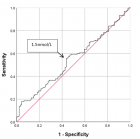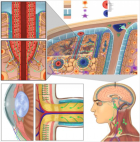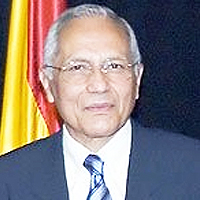Abstract
Research Article
Exploring novel medical applications for commonly used veterinary drug (tilmicosin antibiotic)
Fatma I Abo El-Ela* and El-Banna HA
Published: 31 August, 2017 | Volume 1 - Issue 1 | Pages: 001-016
Tilmicosin (TMC) is a semi synthetic macrolide antibiotic of tylosin derivatives commonly used by veterinaries, has been shown to reveal beneficial pharmacological activities. In the current study, the potential wound healing activity, Anti-oxidant effect (ulcer and hepatoprotective) were investigated. Anti-inflammatory, antipyretic, analgesic (central and peripheral), hypnotic and antispasmodic activity were also screened. This study included adult both sexes of rats (200-250 gm), mice (20-25 gm) and adult rabbits. Experimental wound was induced on the anterior-dorsal side of each rat whereas, ulcer induced by ethanol causing mucosal damage in rats. The oral anti-inflammatory induced through formalin producing edema, antipyretic (Brewer’s yeast induced hyperthermia) and analgesic (writhing test, hot plate method, tail immersion method) while hypnotic effects induced through thiopental sodium. Anti-spasmodic effect on isolated organs (intestinal and uterine muscles) using new method of Modular Single Chamber Organ Bath were carried out on experimental animals. Tilmicosin antibiotic at different two doses of 20 and 40 mg/kg b.wt., has an important role in treatment of ulcer (cytoprotective effect) and improvement the wound healing processes besides anti-inflammatory, analgesics, and anti-pyretic effects. Tilmicosin revealed also hypnotic and intestinal anti-spasmodic effects but showed Pharmacovigilence hepatotoxic effect through the histopathological studies which revealed sever hepatic damage especially at larger dose.
Read Full Article HTML DOI: 10.29328/journal.ivs.1001001 Cite this Article Read Full Article PDF
Keywords:
Tilmicosin; Anti-oxidant; Wound healing; Rats
References
- Etminan M, Samii A. Pharmacoepidemiology I: A Review of Pharmacoepidemiologic Study Designs. Pharmacother 2004; 24: 964-969. Ref.: https://goo.gl/rydTzd
- Programme for International Drug Monitoring. http://www.who.int/medicines/areas/quality_safety/safety_efficacy/National_PV_Centres_Map/en/. 2014.[Acessed in March 2015].
- Papich MG, Riviere JE, Ames A. Chloramphenicol andderiva-tives, macrolides, lincosamides, and miscellaneous antimicro-bials,” In in Veterinary Pharmacology and Therapeutics,, Adams, H.R.E., ,, ed. (Iowa, USA,, Iowa State University Press,), 2001. 868-897.
- Susan LHG, Tucker DT, Robin SR. A study of tilmicosin residues in milk following subcutaneous administration to lactating dairy cows. Can Vet J. 1993; 34: 619-621. Ref.: https://goo.gl/9iiMe6
- Gheith I, El-Mahmoudy A, Elmajdoub A, Awidat A. Pharmacovigilance of Tilmicosin in Mice. Act Scient Vet. 2015; 43: 1318. Ref.: https://goo.gl/eNSjT2
- McGuigan MA. Human exposures to tilmicosin (MICOTIL).Vet Hum Toxicol. 1994; 36: 306-308. Ref.: https://goo.gl/jNykHV
- Hardy D J, Hanson CW, Hensey DM, Beyer JM, Fernandes PB. Susceptibility of Campylobacter pylori to macrolides and fluoroquinolones. J Antimicrob Chemother. 1998; 22: 631-636. Ref.: https://goo.gl/qZrNaU
- Nakagawa Y, Itai S, Yoshida T, Nagai T. Physicochemical properties and stability in the acid solution of a new macrolide antibiotic, clarithromycin, in comparison with erythromycin. Chem Pharm Bull. 1992; 40: 725-728. Ref.: https://goo.gl/iN6ypq
- Enoch S, Leaper DJ. Basic science of wound healing. Surg. 2005; 23: 37-42. Ref.: https://goo.gl/TLNNuS
- Dash DK, Yeligar VC, Nayak SS, Ghosh T, Rajalingam, et al. Evaluation of hepatoprotective and antioxidant activity of Ichnocarpus frutescens (Linn.) R.Br. on paracetamol-induced hepatotoxicity in rats. Trop J Pharm Res. 2007; 6: 755-765. Ref.: https://goo.gl/PB2VDG
- Carvalho CA, Fernandes Km, Matta Slp, Silva MB, Oliveira LL, et al. Evaluation of antiulcerogenic activity of aqueous extract of Brassica oleracea var. capitata (cabbage) on wistar rat gastric ulceratio. Arq Gastroenterol. 2011; 48: 276-282. Ref.: https://goo.gl/wfbRVg
- Shuai W, Yong-rui B, Yun-Peng D, Xian-Sheng M, Ting-Guo K. Evaluation of gastric ulcer model based on gray-scale image analysis. African J Microbiol Res. 2011; 5: 1285-1290. Ref.: https://goo.gl/mQYdrr
- Khayyal MT, El-Ghazaly MA, Kenawy SA, Seif-El-Nasr M, Mahran LG, et al. Antiulcerogenic effect of some gastrointestinally acting plant extracts and their combination. Arzneimittelforschung. 2001; 51: 545-553. Ref.: https://goo.gl/oRCUxd
- Ezekwe CI. Determination of ulcer protecting effect of ethanol extract of Gongronema latifolium in rats. African J Biotechnol. 2013; 12 : 5705-5708. Ref.: https://goo.gl/K83E2q
- Farahpour MR, Habib M. Evaluation of the wound healing activity of an ethanolic extract of Ceylon cinnamon in mice. Veterinarni Medicina. 2012; 57: 53-57. Ref.: https://goo.gl/uuuNGN
- Cukjati D, Reberek S, Miklavi D. Estimation of the hepatoprotective method. Med Biol Eng Comput. 2001; 39: 263-271. Ref.: https://goo.gl/BKQFGT
- Kanchana N, Sadiq AM. Hepatpoprotective effect of plumbago zeylanica on paracetamol induce liver toxcisty in rats. Int J Pharm Pharm Sci. 2011; 3: 151-154. Ref.: https://goo.gl/NLncN2
- Vella SJ, Beattie P, Cademartiri R, Laromaine A, Martinez AW, et al. Measuring Markers of Liver Function Using a Micro-Patterned Paper Device Designed for Blood from a Fingerstick. Anal Chem. 2012; 84: 2883-2891. Ref.: https://goo.gl/weMS9J
- Sithara AP, Ravi M, Mallya S, Sudhakara BS, Srikanth P. Experimental evaluation of analgesic and anti-inflammatory potential of leaves of Antidesma menasu on wistar albino rats. Int J Pharmacol and Clin Sci. 2013; 2: 105-112.
- Mondal H, Saha S, Awang K, Hossain H, Ablat A, et al. Central-stimulating and analgesic activity of the ethanolic extract of Alternanthera sessilisin mice. BMC Complement Altern Med. 2014; 14: 398. Ref.: https://goo.gl/rBxKA7
- Reddy SK, Kumar SA, Kumar VD, Ganapaty S. Anti-inflammatory and Analgesic Activities of Amorphophallus bulbifer (Roxb) KunthWhole Plant. Trop J Pharma Res. 2012;11: 971-976. Ref.: https://goo.gl/5qUkry
- Muhammad N, Saeed M, Kha H. Antipyretic, analgesic and anti-inflammatory activity of Viola betonici foliawhole plant. BMC Complement Altern Med. 2012; 12: 59. Ref.: https://goo.gl/xHzoZQ
- De Faveri Favero F, Grando R, Nonato F, Sousa LMO, Queiroz NCA, et al. Artemisia annua L.: evidence of sesquiterpene lactones’ fraction antinociceptive activity. BMC Compl Alter Med. 2014; 14: 266. Ref.: https://goo.gl/9fYDNY
- Ramaker MJ. The Effect of a Neuroactive Steroid Analog and an Extrasynaptic GABA[subscript A] Receptor Agonist on Ethanol Consumption and Seeking in Mice". Scholar Arch. 2014; 35: 21. Ref.: https://goo.gl/CFwDZJ
- Staff members of Department of Pharmacology, U.o.E. Pharmacological experiments on isolated preparations., Livingstone, E.a.S.L., ed. (Edinburgh, U.K), 1970; 60.
- Marcondes FK, Bianchi FJ, Tanno AP. Determination of the estrous cycle phases of rats: some helpful considerations. Braz J Biol. 2002; 62: 609-614. Ref.: https://goo.gl/eswQuV
- Snedecor GW, Cochran WG. Statistical Methods., Iowa State University Press, ed. (Ames, USA.), 1982; 593.
- Gama H. Drug Utilization Studies. Arq Med. 2008; 22: 69-74. Ref.: https://goo.gl/4vN8D1
- Jerry M, Zuckerman MD. Macrolides and ketolides: azithromycin,clarithromycin, telithromycin. Infect Dis Clin North Am. 2004; 18: 621-649. Ref.: https://goo.gl/snEqpT
- Burette A, Glupczynski A. Helicobacter pylori: The Place of the New Macrolides in the Eradication of the Bacteria in Peptic Ulcer Disease. Infection. 1995; 23: 44-52. Ref.: https://goo.gl/dGaT1w
- Xu L, Wang Y, Nguyen VT, Chen J. Effects of Topical Antibiotic Prophylaxis on Wound Healing Following Flapless Implant Surgery: A Pilot Study. J Periodontology. 2016; 3: 275-280. Ref.: https://goo.gl/WRQKn2
- Ekici Y, Emiroglu E, Ozdemir H, Aldemir D, Karakayali H, et al. Effect of Rapamycin on Wound Healing: An Experimental Study. Transplant Proc. 2007; 39: 1201-1203. Ref.: https://goo.gl/w2Fkz3
- Wang TC, Su YP, Hsu TY, Yang CC, Lin CC. 28-day oral toxicity study of the aqueous extract from spider brake (Pteris multifida Poiret) in rats. Food Chem Toxicol. 2007; 45: 1757-1763. Ref.: https://goo.gl/Ao7X6n
- Bergmeyer H U, Scheibe P, Wahlefeld AW. Optimization of methods for aspartate aminotransferase and alanine aminotransferase. Clin Chem. 1978. 24: 58-73. Ref.: https://goo.gl/n3qk5i
- Baggot JD. Disposition and fate of drugs in the body. In John`s Veterinary Pharmacology and Therapeutics, Booth, W.H.a.L.E., ed. (Ludhiana, New Delhi,, Kalyani Publishers)1984; 36-70.
- King-Wing, Chow K, Choy AS, Kwan BC, Szeto C, et al. Clinical manifestation of macrolide antibiotic toxicity in CKD and dialysis patients. Clin Kidney J. 2014; 7: 507-512. Ref.: https://goo.gl/RkD8eh
- Williamson EM, Okpako DT, Evans FJ. Pharmacological methods in phytotherapy research: In Selection, Preparation and Pharmacological Evaluation of Plant Materials. John Wiley C. 1996; 184-186.
- Khobragade AA, Patel SB, Pophale RR, Vallish BN, Kosale SP. Analgesic and Anti-inflammatory Activity of Roxithromycin and Erythromycin, Alone and in Combination with Ibuprofen:An Animal Study. IOSR Journal of Pharmacy. 2012; 1: 15-21. Ref.: https://goo.gl/64cwfK
- Khan H, Saeed M, Gilani A, Khan MA, Dar A, et al. The antinociceptive activity of Polygonatum verticillatum rhizomes in pain models. J Ethnopharmacol. 2010; 127: 521-527. Ref.: https://goo.gl/ijXpYx
- Taesotikul T, Panthong A, Kanjanapothi D, Verpoorte R, Scheffer JJC. Anti-inflammatory, antipyretic and antinociceptive activities of Tabernaemontana pandacaqui Poir. J Ethnopharmacol. 2003; 84: 31-35. Ref.: https://goo.gl/bbiCTU
- Vinadrell P, Planas J, Torralba A. Inhibition of Erythromycin-lactobionate induced writhing by analgesic drugs. Farmaco Prat. 1980; 35: 133-140. Ref.: https://goo.gl/fcStwT
- Math P, Mishra DK, Prajapati PK, Roshy J, Jha PK. Antipyretic activity of Madhukadi and Madhukadi Ghana-An Experimental study. Int J Pharma biol Arch. 2011;2: 572-576.
- Fajt VR. The effects of danofloxacin and tilmicosin on peripheral neutrophils in healthy cattle, on peripheral neutrophils in cattle with induced Pasteurella haemolytica pneumonia, and on body temperature measured via radiotelemetry in cattle with induced Pasteurella haemolytica pneumonia. Iowa State. 2000. Ref.: https://goo.gl/vxcNQ7
- Kavukçu S, Uĝuz A, Aydin A. Hypothermia from Azithromycin. J Toxicol Clin Toxicol. 1997;35: 225-226. Ref.: https://goo.gl/iBvD77
- Cascio A, Colomba C, Antinori S, Paterson DL, Titone L. Clarithromycin Versus Azithromycin in the Treatment of Mediterranean Spotted Fever in Children: A Randomized Controlled Trial. Clin Infect Dis.2002; 34: 154-158. Ref.: https://goo.gl/t12522
- Cuman RKN, Bersani-Amado CA, Fortes ZB. Influence of type 2 diabetes on the inflammatory response in rats. Inflamm Res. 2001; 50: 460-465. Ref.: https://goo.gl/QZcajt
- Fischer CD, Beatty JK, Duquette SC, Morck DW, Lucas MG, et al. Direct and Indirect Anti-Inflammatory Effects of Tulathromycin in Bovine Macrophages: Inhibition of CXCL-8 Secretion, Induction of Apoptosis, and Promotion of Efferocytosis. Antimicrob Agents Chemother. 2013; 57: 1385-1393. Ref.: https://goo.gl/VXGFvA
- Bowman WC, Rand MJ. Text book of pharmacology. (New York, Blackwell Scientific publication), 1980; 267.
- Katzung BG. Basic and clinical pharmacology. In Lange Medical Books, Companies, M.H., ed. (New York:), 2001; 1064.
- Kaul PN, Kulkarni SK. New drug metabolism inhibitor of marine origin. J Pharm Sci. 1978; 67: 1293-1296. Ref.: https://goo.gl/Txhrrm
- Fujimori H, Cobb DP. Central nervous system depressant activity of MA 1337, 3-[3,4-m-chlorophenyl-1-piperazyl propyl]- 2,4 (1H,3H) quinozolinedonehydrochloride. J Pharmacol Exp Ther. 1965;148: 151-157. Ref.: https://goo.gl/GJHd4j
- Koutsoviti-Papadopoulou M, Kounenis G, Elezoglou V. Effect of erythromycin on different parts of the rabbit intestine: comparison with motilin. Gen Pharmacol. 1994; 25: 93-96. Ref.: https://goo.gl/LTeqcz
- Nissan A, Freund H, Hanani M. Direct inhibitory effect of erythromycin on human alimentary tract smooth muscle. Am J Surg. 2002;183: 413-418. Ref.: https://goo.gl/5zDPah
- England RCD, Norman RI, Elliott RA. Direct Inhibition of Rat Detrusor Muscle Contraction by Erythromycin. Neurourol Urodyn. 2004;23: 273-279. Ref.: https://goo.gl/NAFVzT
- Daenas C, Hatziefthimiou AA, Gourgoulianis KI, Molyvdas PA. Azithromycin has a direct relaxant effect on precontracted airway smooth muscle. Eur J Pharmacol.2006; 28: 280-287. Ref.: https://goo.gl/JgzsdV
- Modrit S. Pharmacokinetics and harmacodynamics properites of tilmicosin in sheep, cattle and rats. University of Florida.1997.
Figures:
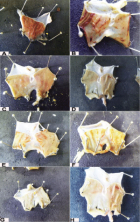
Figure 1
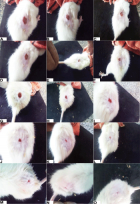
Figure 2
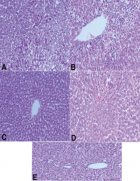
Figure 3
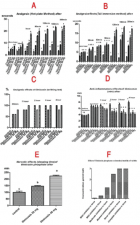
Figure 4
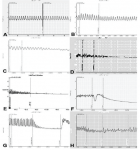
Figure 5
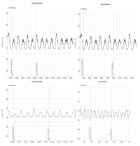
Figure 6
Similar Articles
-
Exploring novel medical applications for commonly used veterinary drug (tilmicosin antibiotic)Fatma I Abo El-Ela*,El-Banna HA. Exploring novel medical applications for commonly used veterinary drug (tilmicosin antibiotic). . 2017 doi: 10.29328/journal.ivs.1001001; 1: 001-016
Recently Viewed
-
Pulmonary Infarction Mimicking An Aspergilloma In A Heart Transplant RecipientAntonacci F*,Belliato M,Bortolotto C,Di Perna D,Dore R,Orlandoni G,D’Armini AM. Pulmonary Infarction Mimicking An Aspergilloma In A Heart Transplant Recipient . J Clin Med Exp Images. 2017: doi: 10.29328/journal.jcmei.1001002; 1: 005-006
-
Recurrent Peripheral Ameloblastoma of the Mandible: A Case ReportAngela Jordão Camargo*,Mayara Cheade,Celso Martinelli,Plauto Christopher Aranha Watanabe. Recurrent Peripheral Ameloblastoma of the Mandible: A Case Report. J Clin Med Exp Images. 2017: doi: 10.29328/journal.jcmei.1001003; 1: 007-010
-
The Risk Factors for Ankle Sprain in Cadets at a Male Military School in Iran: A Retrospective Case-control StudyFarzad Najafipour*,Farshad Najafipour,Mohammad Hassan Majlesi,Milad Darejeh. The Risk Factors for Ankle Sprain in Cadets at a Male Military School in Iran: A Retrospective Case-control Study. J Clin Med Exp Images. 2017: doi: 10.29328/journal.jcmei.1001005; 1: 020-026
-
Magnetic Resonance Imaging Can Detect Symptomatic Patients with Facet Joint Pain. A Retrospective AnalysisWolfgang Freund*,Frank Weber,Reinhard Meier,Stephan Klessinger. Magnetic Resonance Imaging Can Detect Symptomatic Patients with Facet Joint Pain. A Retrospective Analysis. J Clin Med Exp Images. 2017: doi: 10.29328/journal.jcmei.1001006; 1: 027-036
-
Secondary Onychomycosis Development after Cosmetic Procedure-Case ReportMariusz Dyląg*,Emilia Flisowska,Patryk Bielecki,Maria Kozioł-Gałczyńska,Weronika Jasińska. Secondary Onychomycosis Development after Cosmetic Procedure-Case Report . J Clin Med Exp Images. 2017: doi: 10.29328/journal.jcmei.1001007; 1: 037-045
Most Viewed
-
Impact of Latex Sensitization on Asthma and Rhinitis Progression: A Study at Abidjan-Cocody University Hospital - Côte d’Ivoire (Progression of Asthma and Rhinitis related to Latex Sensitization)Dasse Sery Romuald*, KL Siransy, N Koffi, RO Yeboah, EK Nguessan, HA Adou, VP Goran-Kouacou, AU Assi, JY Seri, S Moussa, D Oura, CL Memel, H Koya, E Atoukoula. Impact of Latex Sensitization on Asthma and Rhinitis Progression: A Study at Abidjan-Cocody University Hospital - Côte d’Ivoire (Progression of Asthma and Rhinitis related to Latex Sensitization). Arch Asthma Allergy Immunol. 2024 doi: 10.29328/journal.aaai.1001035; 8: 007-012
-
Causal Link between Human Blood Metabolites and Asthma: An Investigation Using Mendelian RandomizationYong-Qing Zhu, Xiao-Yan Meng, Jing-Hua Yang*. Causal Link between Human Blood Metabolites and Asthma: An Investigation Using Mendelian Randomization. Arch Asthma Allergy Immunol. 2023 doi: 10.29328/journal.aaai.1001032; 7: 012-022
-
An algorithm to safely manage oral food challenge in an office-based setting for children with multiple food allergiesNathalie Cottel,Aïcha Dieme,Véronique Orcel,Yannick Chantran,Mélisande Bourgoin-Heck,Jocelyne Just. An algorithm to safely manage oral food challenge in an office-based setting for children with multiple food allergies. Arch Asthma Allergy Immunol. 2021 doi: 10.29328/journal.aaai.1001027; 5: 030-037
-
Snow white: an allergic girl?Oreste Vittore Brenna*. Snow white: an allergic girl?. Arch Asthma Allergy Immunol. 2022 doi: 10.29328/journal.aaai.1001029; 6: 001-002
-
Cytokine intoxication as a model of cell apoptosis and predict of schizophrenia - like affective disordersElena Viktorovna Drozdova*. Cytokine intoxication as a model of cell apoptosis and predict of schizophrenia - like affective disorders. Arch Asthma Allergy Immunol. 2021 doi: 10.29328/journal.aaai.1001028; 5: 038-040

If you are already a member of our network and need to keep track of any developments regarding a question you have already submitted, click "take me to my Query."










